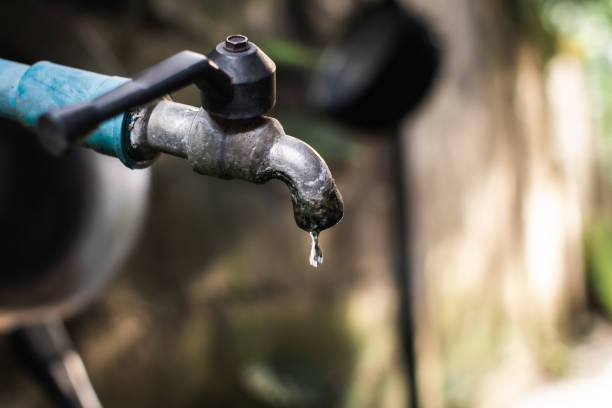
Old faucet with water leaking drop to the ground.
In the realm of household plumbing, there’s one inconspicuous yet indispensable component that often goes unnoticed—the toilet shut-off valve. This unassuming valve plays a crucial role in maintaining the functionality and safety of your bathroom. In this article, we’ll delve into the world of toilet shut-off valves, exploring what they are, why they matter, how to operate and maintain them, and why it’s essential to know where yours is located.
What is a Toilet Shut-Off Valve?
A toilet shut-off valve is a small, usually lever-operated valve located beneath or behind your toilet tank. Its primary function is to control the flow of water from the main water supply to the toilet tank. This control allows you to halt the water supply to the toilet for maintenance, repairs, or emergencies. The valve is typically made of brass or another durable material to ensure longevity and resistance to corrosion.
Why Does It Matter?
- Emergency Repairs: Imagine waking up to a leaking toilet in the middle of the night. The shut-off valve allows you to quickly stop the water flow to prevent flooding and further damage until a permanent solution can be implemented.
- Maintenance and Repairs: Whether you’re replacing a flapper, fixing a leak, or performing any maintenance on your toilet, shutting off the water supply prevents unnecessary mess and water wastage.
- Water Conservation: If you’re leaving your home for an extended period, turning off the shut-off valve can prevent silent leaks that waste water over time. This contributes to both the environment and your water bill.
- Learning Opportunity: Knowing the location of your shut-off valve and how to operate it empowers you with basic plumbing knowledge, potentially saving you money on service calls for minor issues.
Locating and Operating Your Shut-Off Valve
- Location: The shut-off valve is typically situated on the water supply line leading to the toilet tank. It’s often located on the wall behind the toilet or on the floor beneath the toilet tank. Familiarize yourself with its position before an emergency arises.
- Operation: The shut-off valve can be operated in one of two ways: by turning the handle clockwise (right) or by moving the lever perpendicular to the water pipe. Either action will cut off the water supply to the toilet tank.
Maintenance Tips
To ensure your toilet shut-off valve remains in good working condition:
- Regular Operation: Periodically turn the valve on and off to prevent it from becoming stuck due to sediment buildup.
- Check for Leaks: Inspect the area around the valve for any signs of leakage. A leaking valve should be replaced promptly.
- Keep Clear: Ensure that the valve is accessible and not obstructed by clutter or debris.
Conclusion
In the grand scheme of household plumbing, the toilet shut-off valve may be a small player, but its impact on your daily life and the well-being of your home is immeasurable. Understanding its role, knowing its location, and being familiar with its operation can spare you from potential disasters and empower you to take control of minor plumbing issues. So, the next time you use your bathroom, take a moment to appreciate the unsung hero—the toilet shut-off valve.




